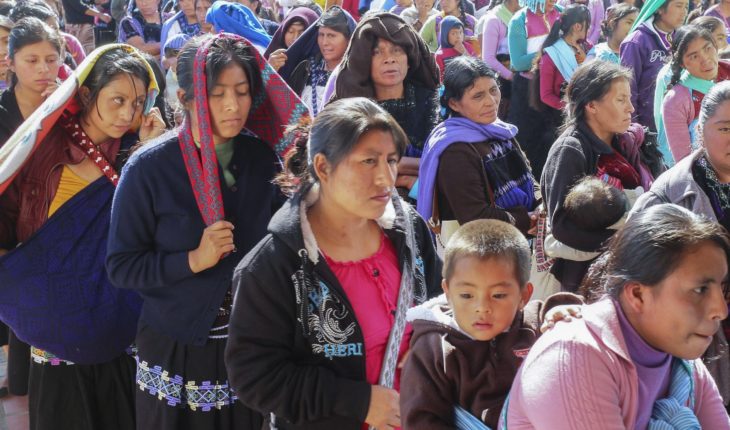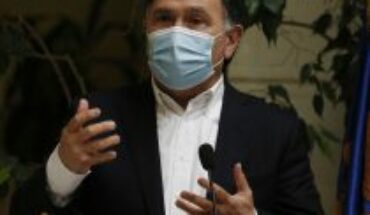Prospera’s gone. Instead, the Benito Juarez Welfare Scholarship program was created, which will provide monetary support to students from initial education to university. Beneficiaries will no longer receive transfers for food, no preventive medical consultations or self-care workshops.
Because of its history and objectives, the program had several components. Prospera began in August 1997, but had name changes and additions. In the book of the Coneval, The Progress-Opportunities-Prospera (POP) 20 years after its creation, Iliana Yaschine, researcher of the University Programme for Development Studies of UNAM and who has coordinated evaluations on the POP, talks about its beginnings and objectives.
It was a program aimed at people in extreme poverty, which sought to simultaneously influence three factors: nutritional deficiencies (low birth weight and malnutrition), health problems (maternal and child mortality, under development preventable illnesses, early pregnancy) and limited investment in education (low schooling, reprobation and early school dropout from third grade, but more pronounced from secondary school especially for girls).
Read: Marginalized population runs out of medical checkups for Prospera disappearance
That is why the POP had three components, education (scholarships for students of basic education, middle and higher); (albeit without restrictions of use), as well as supplements for pregnant, breastfeeding and under-5 women, and health, which included self-care workshops and mandatory preventive checks for the entire Family.
Although before its disappearing, the program was the target of various signallings by the Federation Superior Audit (ASF) due to various failures. In 2016, for example, in terms of operating expenses there was a surplus of 382 million 023 thousand pesos, representing 10% of the total authorized budget.
In the same year there were signs of errors in the pattern. Inconsistencies were determined, such as dates of birth recorded in a range of years from 1643 to 2050; as well as 2,014 duplicate locations and differences between the number of localities served and those reported in prospera’s fourth quarterly report 2016.
Nohemí Ánimas Vargas, holder of the National Coordination of Scholarships for Welfare Benito Juárez, the program that replaced Prospera, states that by verifying the standard by states it was found that there were more beneficiaries than the total population number.
You may be interested: ‘I no longer get support, it’s a hard hit’: Families recount how Prospera’s elimination affected them
“We made a contrast between the standard and the projections of the National Population Council, CONAPO, for the last twin of 2018 and found that there were 400 thousand more families registered than the inhabitants, this at the national level, but with a greater impact in the states poorer.”
Did it work or not?
ASF performance evaluations also identified problems assessing whether the program actually served its function. In Prospera’s education component, the ASF recorded that, in 2017, more than 4 million 680 thousand students of basic education were given scholarships, as well as one million 153 thousand upper middle-level students; more than 90% had regular attendance at classes.
However, the auditors noted that there were no indicators to assess whether fewer and fewer students defected and successfully completed their studies, nor to what extent this program actually contributed to the enrollment of more students in the Campuses.
Susan Parker, PhD in economics, research professor at the Center for Economic Research and Teaching (CIDE) and Prospera’s evaluator for coneval, disagrees with having no results in permanence and continuity in schools.
Find out: Prospera dismantling leaves health workers unemployed
The researcher explains that after 20 years of the program’s existence it has been possible to measure its impact not only on the increase in schoolchildren of the beneficiary families, which on average increased a school and a half degree, but also on the income Monetary.
One of the characteristics of Prospera’s education supports is that they were differentiated: they were increasing between grades and school levels. And they were taller for girls, because low-income families used to take them out of school first when family spending was complicated.
Rogelio Gómez Hermosillo, who was coordinator of the Opportunities program and current coordinator of Citizen Action against Poverty, says that the increase in level scholarships and the difference between men and women was to encourage permanence and progress at school.
“That is lost when you give linear scholarships, and if you only give one per family (as you do now with the Benito Juarez Welfare Scholarships, in the case of basic education), the injured ones will be women, because they are the ones who first take out of school if there is economic pressure”.
To receive education support, the family had to check that the beneficiaries went to school, which reported whether or not students attended classes. This resulted in more children and adolescents remaining in the classroom.
Read: Dismantle Prospera: They remove health and food components, leave only scholarships
Parker says studying longer had an effect especially among women. The researcher says that in one study, of which she is a co-author, it was determined that the exbeneficiaries of Prospera’s education supports had an increase in their income, as a study group, of between 30 and 40%, compared to those who did not receive the scholarships. This is because more women ex Prospera have a paid job.
In men, change is more modest, the increase in income, against the children of families who did not receive the support, is 10 or 15%. However, the researcher admits that in terms of social mobility the effect is not significant, although it is still studied.
“The program helped to have a better income, and it helped families on a day-to-day basis, to eat better or meet their needs, but if the beneficiaries now have a better job than their parents, that’s hard to say yet.”
Regarding the difference in amounts from the change to another program, Máximo Jaramillo, researcher in social policy and co-author of several chapters of the book El Progresa-Oportunidades-Prospera 20 years after its creation, lists among the positive results of the POP that became an important component of the income of the poorest households. In the group with the lowest monetary perceptions (Decil I), Prospera accounted for 24% of household income.
With the switch to Benito Juarez Scholarships, if families have sons or daughters in basic education, the only thing they will receive is 800 pesos per month per family (previously it was for each fellow and they were higher for women), it doesn’t matter if there is more than one child in school at that level, neither grade nor gender.
Read: Prospera and Popular Insurance, key social programs you don’t know if they really work, says The Audit
In higher middle education (where they are universal) will be 800 pesos per student and the same in higher education, although here they are limited for indigenous population, high marginality or living in areas with a high rate of violence.
Jaramillo warns that for those with two scholarships in basic education, food support and some more from the program, the change represents a monetary loss.
The researcher explains that the average transfer decreased. Now what a family with children in primary or secondary school will receive is 800 pesos per month, 1600 each bimestre, and only for 10 months. In 2017, the average annual amount of what a family received for Prospera was 11,640 pesos, now it will be 8 thousand pesos. “Transfers, on average, are going to be 40% lower.”
No health or nutrition
In addition, as health and food components no longer exist, families will no longer have preventive consultations or support for nutrition supplements. Gómez Hermosillo explains that these were not interventions at a high cost to the government and allowed to care for beneficiaries in the field of the preventive and the little ones provided health and nutrition at a crucial stage of life.
In addition to medical check-ups and self-care workshops, she explains, to pregnant women and children under the age of two, or five if they were malnourished, they were given food supplements.
“At this stage, in the first thousand days, from gestation to two years, all the capabilities of the brain are formed, but if the necessary micronutrients are lacking, the development is not adequate, neither physical nor mental. And those are only obtained from a sufficient and varied diet, which most children in Prospera cannot have.”
Without Prospera, he adds, “the beneficiaries are left without preventive medicine and, above all, without adequate nutrition during pregnancy and early childhood, when the greatest difference can be made.”
Read: Scholarship budget for young people is insufficient; the program is biased and has short-term vision: study
Susan Parker explains that positive effects on the health and development of children in the beneficiary families of the program have generally been found. In rural areas, where there is more evidence because there the supports started, various research has found that among beneficiaries under one year, the likelihood of dying before that age was reduced to 17%. In addition, children grow more, up to an inch and a half more.
Parker states that these effects have no one-off cause. “It was the efProspera’s complete package, which involved increased family income, preventive checkups, vaccinations and supplement.”
Performance assessments by the Federation’s Superior Audit (ASF) for the 2017 Public Account audit analyzed prospera’s three components, relative to health, that auditors found that 94% of the 6.5 million beneficiary families received coverage, including maintaining nutritional control of 99% of children belonging to the families benefited.
In addition, more than one million 600 thousand self-care workshops were held to vulnerable people. But they found that beyond subsidiary support there are no indicators to assess whether the capacities of health services are being increased or the effectiveness of workshops to increase disease prevention.
Jaramillo says that the health of the beneficiaries did improve, “of that there is no doubt, but the question is how much has to do with that and how much it is because it started operating Popular Insurance, where care is not only preventive”.
Although the recommendation, rather than just transforming it into a scholarship program, because there are people who need support and don’t have children in school, is to take away co-responsibility. The academic argues that forcing people to attend medical checkups is thinking that because they are poor they are unable to make decisions and care for their well-being.
What is needed, he says, is: “universal money transfers (for certain groups) and improving education and health. People don’t go to these services because they are far away, they are of poor quality and they serve them poorly, so they do not go, not because they do not want to. In health what is needed is a universal system that is efficient.”
What we do in Animal Político requires professional journalists, teamwork, dialogue with readers and something very important: independence. You can help us keep going. Be part of the team.
Subscribe to Animal Politician, receive benefits and support free journalism.#YoSoyAnimal
translated from Spanish: The defunct Prospera program, did it or didn’t it leave benefits to the population?
August 30, 2019 |





